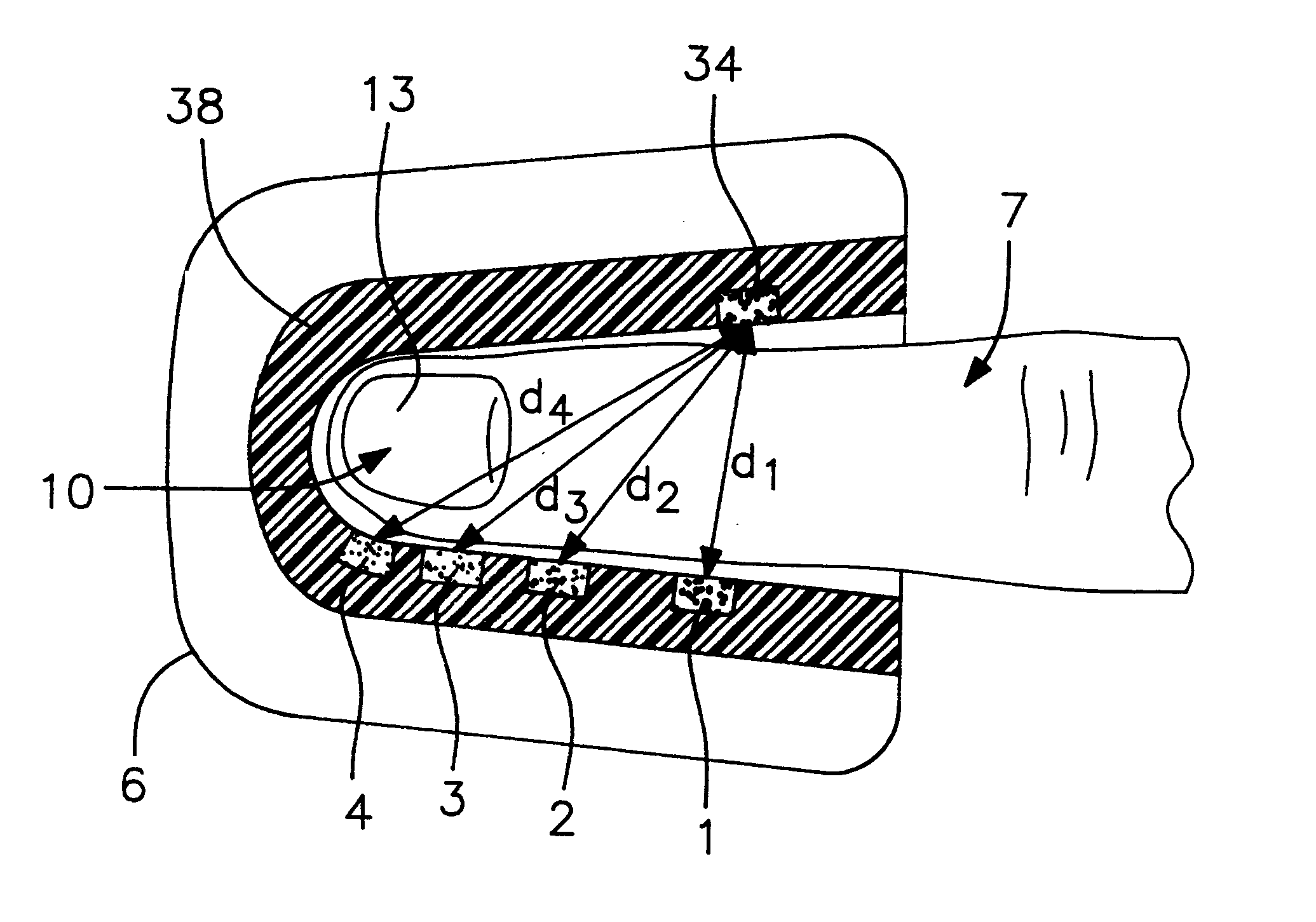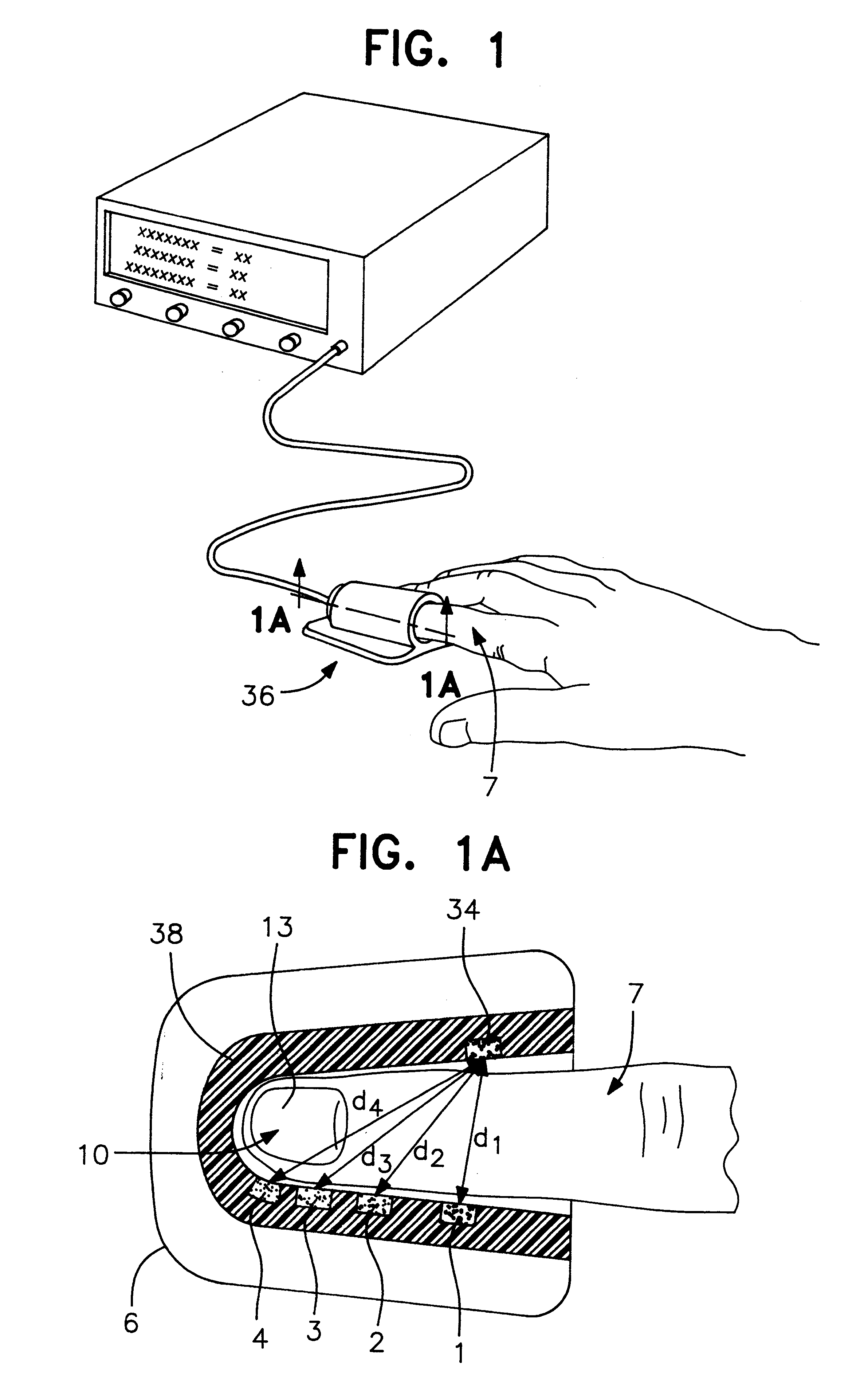Method and apparatus for non-invasive blood constituent monitoring
a non-invasive and blood constituent technology, applied in the field of non-invasive blood constituent monitoring, can solve the problems of failure to isolate and resolve individual and specific scattering and absorption coefficients of desired constituents
- Summary
- Abstract
- Description
- Claims
- Application Information
AI Technical Summary
Benefits of technology
Problems solved by technology
Method used
Image
Examples
Embodiment Construction
Physical embodiments as shown in FIG. 1 include the optical array, pressure transducer / balloon system and clam-shell fixture. Requisites of the preferred embodiment include a holder for the finger (or other tissue) such as seen in FIGS. 1 and 1A and 1B. This clam-shell fixture not only secures the tissue but also the optical array, and transducer system.
FIG. 1D is a schematic diagram for a mylar base member 38 that is shaped generally like a cross. As oriented in FIG. 1D, vertically extending portion 52 crosses with a horizontally extending portion 54 to yield top leg 56, bottom leg 58, and side legs 60, 62. In use, a finger 7 lies along the longitudinally extending portion 52 with the finger tip placed on the top leg 56 to properly cover the arrangement of LED's 32 and photodetector 34, which are arranged like those on FIGS. 1A-1C. A piezoelectric pressure transducer or strain gage 66 spans the horizontally extending portion 54 from near the tip of side leg 60 to the tip of side le...
PUM
 Login to View More
Login to View More Abstract
Description
Claims
Application Information
 Login to View More
Login to View More - R&D
- Intellectual Property
- Life Sciences
- Materials
- Tech Scout
- Unparalleled Data Quality
- Higher Quality Content
- 60% Fewer Hallucinations
Browse by: Latest US Patents, China's latest patents, Technical Efficacy Thesaurus, Application Domain, Technology Topic, Popular Technical Reports.
© 2025 PatSnap. All rights reserved.Legal|Privacy policy|Modern Slavery Act Transparency Statement|Sitemap|About US| Contact US: help@patsnap.com



